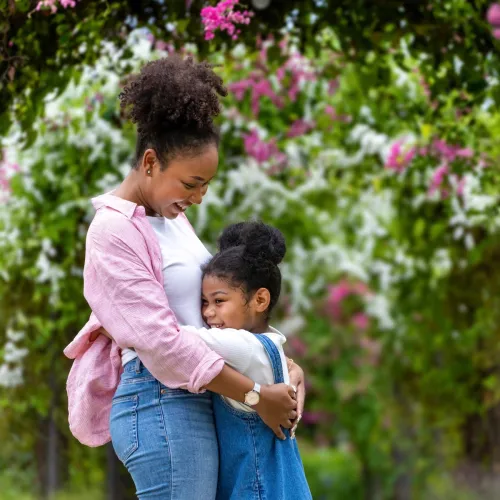Being Apart: Helping Kids Adjust to Having Two Houses

For children whose parents were previously living together, the biggest adjustment after a divorce is often getting used to not being able to see both parents on a daily basis. Not only can this sudden change be disorienting, but it can also be incredibly scary, for young and older children alike.
No matter what methods co-parents employ, this change will be momentous for children. It will have a big impact. But co-parents can exert considerable influence on children adapting to the situation and feeling safe in their new family structure.
To be the positive force your child needs while they adjust to joint custody and life in two houses, consider these 3 things.
1. Understand the importance of expressing joy
In order to adjust to their parents living separately, children must be able to express joy and happiness about their lives in both homes. They should never feel as though sharing moments and memories from their time with your co-parent is taboo or unwelcome.
While most parents would never overtly tell their children such a message, children can still end up feeling this way regardless.
After a divorce or separation, children are painfully aware of their parents’ moods and outlooks. They listen to how their parents talk to and about each other and observe how they react to news or stories that concern their co-parents.
If a child’s parent is unable to discuss their co-parent without rancor, regularly dismisses or belittles their child’s other parent in front of them, or refuses to actively engage in conversations about them with their children, it’s not unreasonable for them to come to the conclusion that discussing their time in both homes is frowned upon.
The Solution: It’s vital that co-parents are able to keep their personal feelings about each other in check in front of their children at all times. It’s natural for a child to want to talk about the fun things they did with their other parent. In order for them to feel comfortable with doing so, you should aim to be as engaged with them about this topic as you are with others.
2. Support contact outside of parenting time
If your child is used to reading a book with a parent every night or looks forward to regaling them with the latest drama when they get home from school, joint custody can be a particularly tough adjustment.
When joint custody schedules incorporate frequent changeovers, it may be less difficult to grow accustomed to this aspect of living in two houses. But if your parenting schedule prioritizes longer chunks of parenting time, such as alternating weeks, it can take a bit more work to help children adjust.
The Solution: One way to support a child when they’re apart from a parent is to simply support communication between the two of them. That could mean making sure scheduled phone calls are a part of your parenting plan or making it a priority to have video chats at least once or twice during your parenting time.
While staying in touch is a key facet of parent-child relationships after a divorce, it’s also incredibly important that neither parent overly encroaches on the other’s parenting time. Multiple calls per day or frequent requests for video chats can not only negatively impact the relationship between co-parents, but can also unfairly commandeer precious time between the child and their other parent.
3. Give children a clear view of their schedule
Helping children adjust to a joint custody schedule will involve understanding and combating their fear of the unknown. Children may have questions such as:
- When will they next see their other parent?
- For how long will they be with them?
- How will they be spending their birthday or important holidays?
These questions can flood a child's mind with worry and uncertainty.
The Solution: While it's a hard and fast rule that children should never be put in the middle of co-parenting conversations, co-parents should still work with them to make sure they understand the ins and outs of their schedule in an age-appropriate manner.
Efforts to do so could include things like printing a color-coded parenting schedule and hanging it on the fridge, having a countdown jar for when they’ll next see their other parent, or giving limited access to your shared parenting calendar if your children are older.
Joint custody is a very common arrangement for families after a divorce or separation, but it can still be a source of anxiety and tension for children. To ease that transition, co-parents should always aim to work together to help their children adjust and feel confident in their new family structure.
NOTE: Many state and federal laws use terms like ‘custody’ when referring to arrangements regarding parenting time and decision-making for a child. While this has been the case for many years, these are not the only terms currently used to refer to these topics.
Today, many family law practitioners and even laws within certain states use terms such as ‘parenting arrangements’ or ‘parenting responsibility,’ among others, when referring to matters surrounding legal and physical child custody. You will find these terms as well as custody used on the OurFamilyWizard website.



